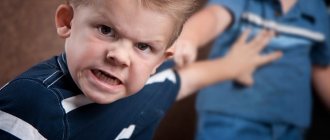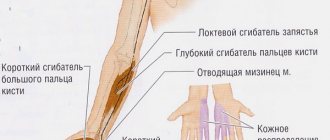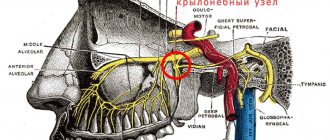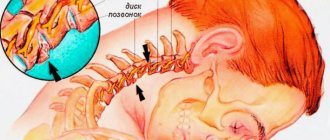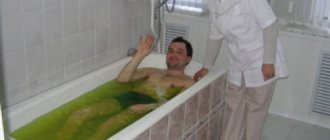Substance abuse is a type of drug addiction, a set of pathological conditions that are formed on the basis of dependence on various toxic chemical substances that do not belong to the class of narcotics. Basically, this is a hobby for teenagers from disadvantaged families. This addiction is deadly; according to statistics, 3 out of 10 people die from just one sample of toxic substances.
The consequences of substance abuse are terrible: the personality deteriorates very quickly, the psyche completely changes, and physical health suffers. To fight the enemy, you need to know him in person, understand the causes of addiction and its features. What types of substance abuse exist, and why is it dangerous?
Adolescents are mostly affected by substance abuse
Causes of substance abuse among teenagers
Substance abuse in children and adolescents is caused by the following factors:
- irrepressible craving for new sensations and adventures;
- the influence of bad company;
- the specificity of the child’s personality – increased sensitivity, emotional instability, inability to defend one’s position, the desire to keep up with peers, the willingness to obey the voice of the majority;
- in adolescents - the desire to be independent, boredom, low level of education and the costs of upbringing, lack of self-criticism, weak willpower;
- delayed intellectual development;
- dysfunctional atmosphere in the family;
- lack of required prevention of substance abuse at school and in the family.
It is necessary to focus attention on the fact that children who are drug addicts can “appear” both in rich families with a prosperous environment, and in the family of wealthy intellectuals in cases where the teenager, after school, is left to his own devices, he is not given due attention, for his leisure will not be subject to strict but “invisible” control.
The leader of the group of substance abusers is a teenager with an unstable-epileptoid type of character, and the rest of the crowd consists of conformist teenagers.
Types of substance abuse
Teen substance abuse is no different from adult substance abuse. The younger generation quickly grasps all the sophistications that they spy in real life, in movies and on the Internet. The cheapest household volatile substances are used.
Gasoline
Dependence that occurs with regular toxic exposure to gasoline vapors containing toluene, benzene and xylene. It is dangerous because it disrupts biochemical processes directly in nerve tissues.
To induce euphoric intoxication, it is enough to sniff the material soaked in gasoline for 10 minutes. If the “session” continues, mental delirium sets in – delusional states accompanied by hallucinations. Datura goes away after stopping inhalation after 30-40 minutes, and is accompanied by side effects:
- Strong headache;
- nausea;
- loss of appetite;
- full immersion;
- lack of interest in surrounding events.
This condition may persist for 5 days. A gasoline addict always has red, swollen eyelids.
Note to parents! Listening to words spoken in a special context in a child’s conversations: mask, petal, sniffer, sleep, watch cartoons, shablit, shablili – speaks of danger! These word forms are from the informal slang of drug addicts.
Acetone
The consequences of inhaling acetone vapor are dangerous not only because of addiction and long-term complications, but also because if the dose is incorrectly calculated, a burn to the larynx and trachea is possible, and with prolonged inhalation the patient can fall into a coma.
Mostly teenagers and juniors indulge in acetone, since hallucinations come very quickly, they are strong, have special colors and obvious sexual orientation. Teenagers are also attracted by the fact that with acetone substance abuse, time seems to stop.
A drug addict, high, sits with his eyes closed, his head bowed, not reacting to anything. After coming out of euphoria, severe irritation, weakness, constant coughing, severe nausea, and even repeated bouts of vomiting sets in.
Adhesive
The symptoms that can be used to recognize a glue sniffer pass quickly enough, and the child can successfully mask the remaining side effect in the form of nausea. A glue addict can show a pale (gray) face, bruises around the eyes and poor appetite.
To obtain toxic intoxication, adhesives based on toluene are suitable. In this substance abuse, mild euphoria is replaced by hallucinations. The danger of this type of substance abuse lies in the very procedure of obtaining “pleasure”. To do this, you need a plastic bag placed on your head. It is this that often causes death from suffocation. It is no coincidence that glue addiction has received the common name “death in the bag.”
Substance abuse with nitro paint solvents
The state of euphoria abruptly gives way to anger or even aggression. To achieve hallucinations, it is necessary to inhale the vapors for a long time, but for lightness of the body, a feeling of “floating” and lifting the mood, 5 minutes are enough, after which an attack of severe headache and vomiting occurs. A “solvent lover” can be identified by an earthy-colored skin combined with swelling on the eyelids and bridge of the nose.
Medicinal
Today, adolescent substance abuse has expanded to include the use of medications. These are mainly antihistamine tablets, some types of anesthetics, as well as other over-the-counter medications, for example, Trigan-D, Solutan.
It is worth excluding drugs from the list from your home medicine cabinet: Combispasm, Cyclopar, Sigan, Dolospa tabs, Spazmolex, Nimesulide, Nigan, Oxigan.
Outwardly, adolescent substance abusers are distinguished by an unhealthy blush and scarlet lips. In chronic drug abuse, there are signs of involuntary movements, with the gait characterized by “stiff legs with an overly straightened back.” If it is impossible to take the next dose, sudden changes in mood appear and sweating increases.
Inhalation of gas
Another “adult invention” - sniffing or inhaling gas, is currently popular among children 8-10 years old. Gas cartridges for refilling lighters, the lighters themselves, and toilet air fresheners have become a threat to the health of children, as they can be a source of toxic intoxication. At the same time, people not only snort liquefied butane, they also manage to drink it.
Recognizing by external signs that a child is sniffing gas is quite problematic. You can suspect something is wrong only by a drop in concentration, insomnia and mood swings.
Chifirem poisoning
A common form of adolescent and child substance abuse. It is defined as a way of imitating adults who acquired this addiction in prison. The rather unpleasant taste of the drink, as well as an “indistinct” high without vivid hallucinations, contributes to the fact that children quickly finish drinking strongly brewed tea.
Caffeineism
Treatment for this type of non-drug addiction is one of the easiest. Caffeine addicts are encouraged to get rid of the bad habit by gradually reducing their daily coffee intake and replacing some cups with caffeine-free coffee drinks. The same principle of therapy applies to caffeineism caused by abuse of products and medications that contain methylxanthines. Substance abuse in the form of caffeine addiction is practically never found among children and adolescents.
Mechanisms of addiction development
After inhaling a poisonous drug, signs of drug intoxication appear, which are accompanied by symptoms:
- Tinnitus and loss of body coordination.
- A person cannot adequately respond to external stimuli, and a stage of fun begins.
- Three minutes after taking the drug (orally or by inhalation), short-term euphoria occurs.
- The general state of drug intoxication lasts about 10 - 15 minutes and sharply declines.
In order to prolong the feeling of euphoria and experience it again, the addict can use the drugs repeatedly or conduct inhalation sessions up to several dozen times.
Teenagers quickly get used to getting a high and try to experience euphoria more and more often. Patients do not remember the unpleasant sensations from using the drug, but only remember that very state of euphoria, which forces them to re-use the drug.
This is why it is important to monitor your child and his environment and prevent the habit from developing.
How addiction develops
There are the following stages of substance abuse:
- The initial stage is the formation of mental dependence and the development of tolerance, which forces an increase in the dose and/or frequency of taking the toxic substance.
- The chronic stage is an increase in tolerance, which is caused by a change in the effects of the euphoric picture. Physical dependence and withdrawal symptoms appear.
- Late stage – subsequent progression of symptoms. Prolonged withdrawal and withdrawal symptoms are common. General exhaustion of the body appears. Even high doses do not cause euphoria and are unable to restore normal physical condition and vitality. Somatic, neurological and mental changes occur in the body.
Symptoms of substance abuse and its consequences for humans
Toxic intoxication within the framework of substance abuse is not specific and depends on a number of factors - usually the type and type of active substance, the volume of inhaled vapors and gases, as well as the individual characteristics of the body (a number of people develop only pathological symptoms and do not experience a “high”).
Signs of substance abuse include:
- Difficulty speaking and incoherent thoughts,
- Increased heart rate with vasodilation,
- Enlarged pupils, impaired coordination of movements.
After a short period of time, the following symptoms are observed:
- Psychomotor excitation or vice versa – inhibition,
- Euphoria,
- The appearance of various hallucinations, both visual and auditory.
On average, after 1-2 hours, in the absence of additional doses of the toxin, its short-term effect of toxic substances on the nervous system decreases significantly, after which secondary signs of intoxication form:
Secondary signs of poisoning:
- Nausea and vomiting,
- Pain syndrome in the head, neck, abdomen and other parts of the body,
- Brief convulsions.
If too high doses of volatile substances are used over a short period of time, pathological manifestations can form complexly and simultaneously. Often, already after the first hours after the act of toxicity, generalized convulsions develop, fainting, breathing problems, depression of other vital parameters of the body are observed, up to cardiac arrest, suffocation and clinical death in the absence of prompt medical assistance.
Long-term consequences of substance abuse include irreversible organic damage to the central nervous system, bronchopulmonary system, liver, heart and blood vessels.
How does substance abuse manifest?
Signs of substance abuse in adolescents and children are similar to those in adults, but they appear much earlier. Each substance has its own specific effect on the body, and therefore the symptoms differ from each other, but there are general signs that parents should be wary of:
- the child smells of chemicals, and not only the clothes smell, but the skin and exhaled air;
- children stop adequately answering questions and limit themselves to “I don’t know” and “I don’t remember”;
- the child cannot consistently express his thoughts;
- constant irritability, sometimes replaced by periods of sudden mood swings;
- apathy, sloppiness and uncleanliness appear;
- impairment of concentration and memory becomes visible;
- possible - rash in the nasopharynx, muscle weakness, inflammation of the mucous membranes of the nasopharynx, trachea and upper esophagus;
- the child suffers from frequent headaches, is constantly in a sleepy state and suffers from insomnia.
If a child experiences a condition similar to a seizure or convulsions, an urgent consultation with a neurologist is necessary. Parents should not hide their own suspicions of substance abuse from a specialist. It is necessary to insist on an electroencephalogram.
Treatment of substance abuse in adults and children
How to get rid of substance abuse? If an adult is an addict, then the main thing is to make an undeniable decision to quit, no matter what. This plays a decisive role, because “withdrawal” with this type of addiction does not last long and can be endured. In this case, you can treat substance abuse at home: gather all your will into a fist and endure a turning point. You can ask a friend to lock the door and under no circumstances open the door for the next week. Drinking a lot of water to cleanse the body of toxins will also help with adsorbents. However, the best option will always be to go to the doctor, since only a doctor knows the antidote for the substance being taken and drugs that can remove the remaining toxins from the body, thereby preventing further destruction of the organs, brain and nervous system.
If a parent suspects that his child is a substance abuser, it is necessary to strengthen control and check for the presence of the above signs. If you have several of them, you need to see a doctor (toxicologist, narcologist), check your heart, take urine and blood tests, and do an ultrasound. You shouldn’t “fall for” the child’s persuasion, words that everything is fine and he feels good, that you don’t trust him, hysterics and resentment. Naturally, a child addict will deny his addiction in every possible way and be afraid of its discovery. Treatment of childhood substance abuse is best done in a hospital or at home under the strict supervision of a doctor and parents. In the hospital, the child will undergo detoxification and restore body functions as much as possible. Glucose, various groups of vitamins, antipsychotics, tranquilizers or antidepressants are used to normalize the mental state.
You should not expect that after undergoing treatment, a person will not start using substances again. It must be remembered that the roots of substance abuse are almost always problems in life, conflicts with parents or friends, unhappy love and many other factors. Everyone needs to figure this out. It's best to see a psychologist. For a teenager and for any adult, it is important to feel warmth, that he is needed and loved by someone, that he is loved. Relatives of a substance abuser must try to find out the root cause of his addiction and give him what he was missing. It is love, understanding, and ensuring comprehensive development that will give a person support and incentive to maintain his health and place among people.
The effect of substance abuse on the human body is exactly the same as that of drug addiction. Substance abuse is a painful dependence on chemical substances that are not officially included in the list of prohibited substances by the Government of the Russian Federation. The set of such conditions of a painful type is characterized, first of all, by an acute craving for taking drugs that cause chronic intoxication, and with it a dependence that forms both on the mental and physical levels.
People who inhale toxic substances do not control the dose of their consumption, which most often leads a patient under the influence of a hallucinogenic or intoxicating drug to disastrous consequences.
Consequences of using toxic substances
The harm of substance abuse is undeniable for adults, but not very clear for children. Parents need to convey to their children that inhaling chemicals will definitely result in the following difficult-to-treat diseases or irreversible changes:
- toxic hepatitis, cirrhosis and liver cancer;
- bone marrow damage and blood cancer;
- damage to the mucous membranes leading to irreversible loss of taste, smell, deafness, cancer of the esophagus, respiratory tract and nasopharynx;
- arrest of mental development, personality debilitation and mental inferiority;
- rapid death from: suffocation, uncontrolled actions while high, overdose;
- long-term death caused by sudden respiratory or cardiac arrest.





